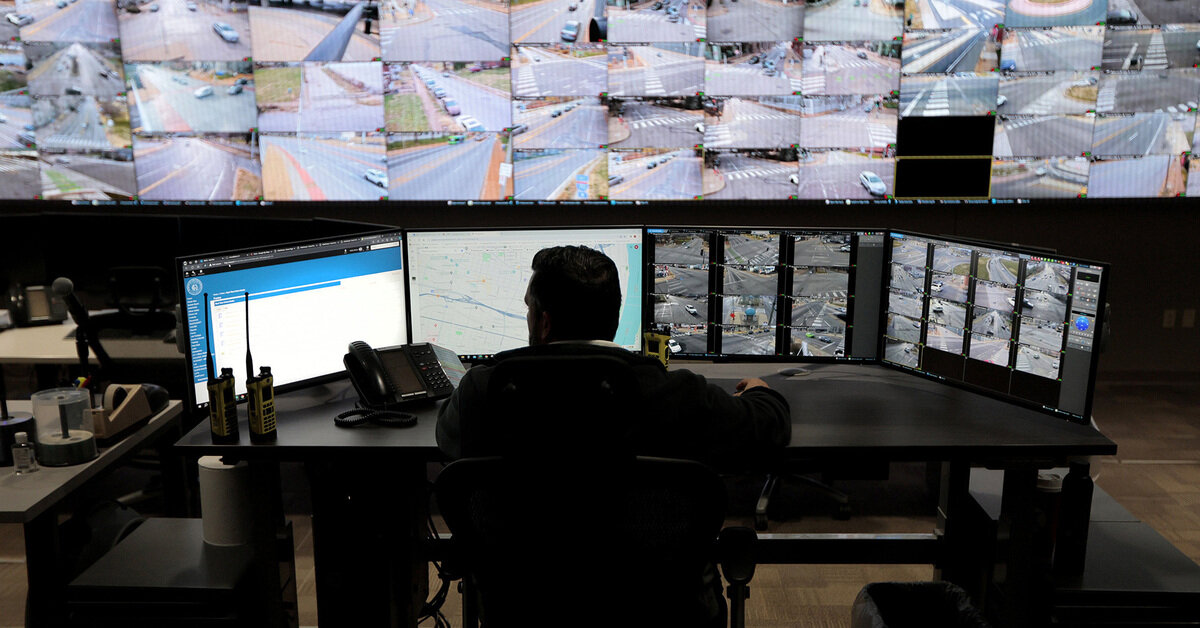Private security footage is nothing new to criminal investigations, but two factors are rapidly changing the landscape: huge growth in the number of devices with cameras, and the fact that footage usually lands in a cloud server, rather than on a tape.
When a third party maintains the footage on the cloud, it gives police the ability to seek the images directly from the storage company, rather than from the resident or business owner who controls the recording device. In 2022, the Ring security company, owned by Amazon, admitted that it had provided audio and video from customer doorbells to police without user consent at least 11 times. The company cited “exigent circumstances.”
I love technology but I don’t ever see myself installing a camera in my house that connects to the internet like this. It’s literally big brother…
I give my cam access to the internet when I travel. Outside of that it’s LAN only.
Luckily most NAS’s have software that can capture it and you can back it up to the cloud encrypted.
do you mind sharing a basic explanation about your setup? i’m looking at doing something similar with TrueNAS and NextCloud.
One way to get access, rather than a cloud solution, is to use a mesh network solution like WireGuard/Tailscale (and I’m gonna mention Hamachi on Windows, because I’ve used it since about 2005).
These solutions create an encrypted virtual network between devices that runs on top of whatever network you’re currently on.
In this way you’re never exposing internal resources, in any way, to the internet*. Only to other devices that are running the client app, using your encryption keys.
I’m currently running Tailscale on a desktop at home, all our mobile devices, and a Raspberry pi. I can connect to SMB shares on my home desktop from my phone, wherever I am (I mention SMB only because it’s not routable, and insecure. Any network protocol can run over a mesh network. I also run FTP, SFTP. Html, etc).
I’ve kept my laptop in sync with my desktop at home this way (using Hamachi) since ~2005.
This approach means you’re always using LAN connection methods, rather than relying on a cloud you don’t control.
*With Wireguard/Tailscale you can expose specific resources to the wider world, but you have to specifically configure it.
Ah, yes. Tailscale. That’s a pretty obvious solution that I hadn’t considered… Thanks for the recommendation.
I’m just glad to have it. I used Hamachi for years and have been looking for a mobile client since 2010.
Glad Wireguard/Tailscale stepped up and are developing more.
That might be something I would consider but I doubt I have the know how
With Tailscale, very little know-how is required. Install the app on 2 devices, see it in action.
Depending on your home devices, you may need to enable Subnet Routing on a device that can run Tailscale, since the DVR/NVR may not have the capability.
A Tailscale Subnet Router will route Tailscale traffic to the LAN on which it resides, so you can access devices that can’t run Tailscale. For example, I’ve printed to my home wifi printer while remote. I’ve also used it to access a computer that didn’t have TS installed yet because I’d just set it up, and a digital photoframe that only supports SMB. My subnet router is a Raspberry Pi, because it’s always on. But it used to be my Windows desktop, because it’s always on.
Tailscale documents it all pretty well. You install your first client, in the process creating a TS account (which is used to automate the encryption key management). Then install to your second device, and ta-da, you have a TS Mesh network.
To enable Subnet Routing, you open the management console via one of your TS clients, it’ll open in a browser. Pick the device, check the box for Subnet Router, select the network (it’ll be a choice, only one, because it’s only on one LAN), and Bob’s your uncle.
Obligatory reminder that just getting into a car (or walking past one) is considered by pretty much every car manufacturer to be acceptance of their privacy policy:
It’s supported by the famous first principle of Descartes: I think, therefore I accept the terms of service
Should there be an expectation of privacy in public? Definitely wrong for footage to be able to wirelessly, without the owners consent, leave a car.
Should there be an expectation of privacy in public?
No, but there should be an expectation of not being recorded by every car you come across.
Again, the expectation in public is that you don’t have privacy.
The expectation I would have is that your own car isn’t going to collect evidence that could be used against you. And that it won’t collect data in your own garage or on your property.
Someone set off a bomb close to my house. Police asked me questions about it (time, what it sounded like, etc). They noticed I had security cameras and inquired what I had. The dumbfounded look when I said Ubiquiti (they’ve never heard of it) and that all footage was recorded locally on a hard drive. Like they didn’t understand what that meant - obviously they were looking for an answer such as “google” or “amazon” so they could just circumvent me.
I have their routers and stuff! It’s way overkill but I was having such major issues with the all in one routers one usually gets.
I had one of those Vivent door to door folks walk up to me one day, garage open. I was polite enough but explained I had no interest in storing a video feed of my house on their servers as I’d like to do illegal things if I want. They assured me it was stored with “aes256 encryption” - which they expect most laymen to be wowed by - but what good is encryption if they own the keys and crumble to government requests?
But they still won’t catch the delivery packages thieves.
You should always assume any camera to be hostile, unless you have full and complete control over all related software and connections.
Basically, the people who supplied the device will always have more control over it than you do. And big tech just looooves to abuse that and/or cave in to pressure from governments and police agencies.
A lesson for people that think proprietary internet connected cameras are a good idea. You can literally make open source cameras with a SBC like raspberry pi as the controller. And then using a VPN, you can connect to it from the outside.
You can also use proprietary cameras but put them on a separate network segment or otherwise restrict their access so they can’t get out of your local network.
Not ideal to use proprietary cameras at all, but if you are doing then that’s the way to do it.
yeah, if you can’t find FOSS cameras, I’d recommend getting a good old CCTV connected to a device that does not have internet access.
Compare this to the setup for a Google camera: Plug it in, scan a QR code from the Home app, and that’s it. I understand there are security implications, but I’m not particular concerned about privacy in my backyard.
Sadly, since our country is governed by dinosaurs, the responsibility falls on us to help our friends and family avoid sketchy cameras that force the use of their cloud services.
At least until we can convince them to elect people who weren’t born before computers were invented.








